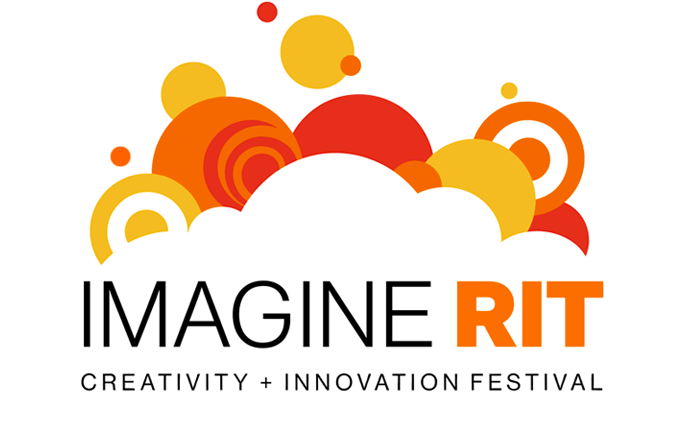Micro-hydropower no pipedream
Matthew Burke, left, Kate Krueger, J.D. Harper and Adam Stoker—all Master of Architecture students at the Golisano Institute for Sustainability—will present their micro-hydropower findings at Imagine RIT.
Can the potential energy of water flowing through the pipes in everyday buildings be captured and harnessed? That’s precisely what a team of student researchers in the Master of Architecture program at the Golisano Institute for Sustainability set out to prove.
The student team presented its initial findings last week at the National Sustainable Design Expo in Washington, D.C.—where it earned an honorable mention—and students will share their research with visitors at Imagine RIT: Innovation and Creativity Festival on May 3 at the Micro-Hydropower exhibit inside GIS.
“Micro hydro”—as it is typically known—is a type of hydroelectric power that produces small amounts of energy using the natural flow of water. Installations can provide power to an isolated home or small community, or are sometimes even connected to electric power networks. There are a growing number of these installations around the world, particularly in developing nations where these systems can provide an economical source of energy without the purchase of costly fuel.
“By researching micro-hydropower, we have developed a prototype turbine that produces electricity when diverted storm water spins it in a pipe,” said Gabrielle Gaustad, assistant professor at GIS and the faculty advisor to the student team. “The simulation we are showing at Imagine will allow guests to see our solution in action—and maybe even try it for themselves if they’d like.”
The aim of the initial phase of the team’s research was to characterize the feasibility of implementing a micro-hydropower unit inside GIS. To do so, the first objective was to meter and monitor the rainwater collected from the building’s roof and stored in a 1,700-gallon tank in the basement.
While the team gathered key data showing water and energy savings with the prototype solution, it also discovered several barriers to actual implementation—including the physical set-up and size of the usable portion of the tank. The research proved valuable, however, to an engineering design firm that was able to use findings to design a micro-hydropower unit for a New York state university.
The second phase of the team’s work focused on optimizing the turbine system selection and allowed for some creativity—mock-up turbine designs were created and implemented using a 3D printer at RIT. Those turbines will be on display at Imagine.
The team plans to present results of its findings to the local American Institute of Architects chapter next month. Students also have an accepted abstract for the RIT Graduate Research Symposium in August.
“Our results are also currently being worked into a manuscript for publication in the international journal, Building and Environment,” Gaustad said. “It’s great to see the results of the students’ hard work getting out there.”





